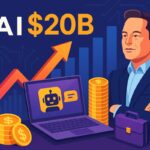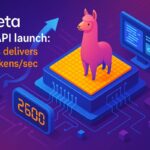“We must strengthen basic research, concentrate on mastering core technologies, and build an independent, controllable AI ecosystem.”
— President Xi Jinping
Introduction
AI Self-Reliance: China stands at a critical juncture in the global technology race. With U.S. export controls limiting access to advanced semiconductors and a growing geopolitical divide, President Xi Jinping’s call for AI self-reliance is both urgent and strategic. Speaking at a Politburo study session on April 26, Xi outlined a comprehensive plan—what he termed a “whole-of-nation” approach—to marshal resources across government bodies, state enterprises, leading universities, and private firms. This story dives into the depth and breadth of Xi’s vision, examining the motivations, the mechanisms, and the broader implications for the worldwide AI landscape.

The Geopolitical Backdrop
Over the past two years, tensions between China and the U.S. have escalated, with technology at the core of the dispute. Export restrictions imposed by Washington on high-end chips and manufacturing equipment have exposed vulnerabilities in China’s semiconductor supply chain. For instance, the U.S. Department of Commerce’s Entity List now includes several major Chinese firms, curtailing their ability to procure key technology for AI training and inference.
Such measures have real consequences:
- Cost Increases: AI model training costs have surged by an estimated 15% as Chinese firms adapt to alternative suppliers.
- Project Delays: Several large-scale AI research projects reported delays of 3–6 months waiting for chip deliveries.
- Partnership Strains: Collaborative research between Chinese and American universities has slowed, affecting joint publications and innovation pipelines.
In this context, Xi’s speech signals Beijing’s intent to pivot from dependency toward an indigenous innovation model.
Historical Precedents for AI Self-Reliance
China’s journey toward technological self-sufficiency is not new. The nation has pursued self-reliance in various high-tech sectors for decades:
- Aerospace: The domestically produced C919 passenger jet entered trial flights after a decade-long effort achieving over 70% local component integration.
- Telecommunications: Huawei’s rise to prominence despite U.S. sanctions demonstrated the power of an integrated ecosystem.
- Renewable Energy: China leads global production of solar panels, with over 60% market share in photovoltaic manufacturing.
These examples illustrate how targeted policies, combined with scale and state backing, can reshape global markets. Xi’s AI agenda aims to replicate and exceed these achievements in the field of artificial intelligence.
Core Elements of the “Whole-of-Nation” Strategy
Xi’s framework comprises three interlocking pillars:
1. Centralized Financing and Resource Allocation
A newly announced US$50 billion AI Development Fund will pool capital from the central government, regional authorities, and state-owned enterprises. Allocations include:
- Chip R&D Grants: Supporting next-generation lithography and wafer fabrication.
- Open-Source Initiatives: Funding community-led projects to build large language models and multimodal AI systems.
- Scholarships & Fellowships: Awarding 10,000 scholarships to AI PhD candidates, with a binding commitment to return and work in China for at least five years.
On the Ground: A Tsinghua University researcher noted that his lab’s annual budget doubled overnight following the announcement.
2. Strategic Procurement and Market Guarantees
To ensure demand for Chinese AI solutions, the government will:
- Mandate Local Solutions: Public hospitals, smart-city projects, and public security platforms must adopt domestically developed AI tools where performance benchmarks are met.
- Performance-Based Incentives: Agencies receive budget increases proportionate to the percentage of local AI technologies deployed.
- Procurement Transparency: A new digital platform will track tenders and contracts, reducing opaque decision-making.
3. Talent Pipeline Development
Addressing brain drain and talent shortages is critical. Measures include:
- Returnee Bonuses: Lump-sum payments of up to RMB 1 million for overseas PhD holders who repatriate.
- Fast-Track Visas: Simplified residency processes for global AI experts collaborating with Chinese labs.
- Joint Research Centers: Partnerships between leading universities—Peking, Tsinghua, and Shanghai Jiao Tong—and international counterparts in Europe and Asia.
These combined forces aim to create an environment where innovation thrives under strategic guidance rather than ad-hoc efforts.
China vs. U.S.: A Comparative Analysis
| Dimension | China’s Command Model | U.S. Market-Driven Model |
|---|---|---|
| Funding | State-led funds, guided by strategic plans | Private venture capital, federal grants (e.g., DARPA) |
| Talent Attraction | Scholarships, returnee bonuses, visa facilitation | Academic freedom, competitive salaries, mobility |
| Supply Chain Control | Import substitution, domestic chip push | Export controls, partnerships with allies |
| Regulation | Top-down directives, rapid rulemaking | Decentralized oversight, multi-agency coordination |
The U.S. system excels in fostering disruptive innovation through a decentralized, risk-taking culture—but can lack strategic coherence. China’s approach offers scale and speed, yet risks bureaucratic overreach and limited academic openness. sources
Voices from China’s AI Ecosystem
To understand real-world impacts, we spoke with leaders at three pioneering startups:
- Liang Wenfeng, CEO of DeepSeek: Renowned for its lean reasoning model, DeepSeek recently closed a $100 million Series B. Liang applauds the surge in funding but cautions: “When compliance measures outpace market feedback, agile startups may struggle to adapt.”
- Zhao Ming, Founder of VisionAI Healthcare: Zhao’s team develops AI for diagnostic imaging, now conducting pilots in 200 hospitals. He notes: “While tenders have increased, navigating procurement channels remains opaque. Startup-to-government communication needs streamlining.”
- Chen Rui, CTO of Autonomous Mobility Lab: Focused on autonomous driving stacks, Chen identifies chip shortages as the primary bottleneck: “We need reliable access to high-performance silicon. Domestic alternatives are promising but still behind in yield rates.”
Their insights highlight a tension between rapid policy-driven growth and the need for operational flexibility.
Economic and Innovation Implications
Xi’s plan has far-reaching consequences:
- Accelerated Domestic Supply Chains: As local chip fabs ramp up, China could cut import dependency by 50% within five years.
- Shift in Global Talent Flows: Returnee incentives may reverse decades-long overseas migration, reshaping the global AI talent market.
- New Investment Frontiers: International VCs may pursue Chinese AI ventures with greater confidence, given clearer policy signals.
Moreover, the development of AI safety sandboxes—controlled environments for high-risk model testing—could position China as a leader in responsible AI deployment, improving global trust.
Lessons from Other Sectors
Historical campaigns for technology self-reliance offer valuable parallels:
- Railways: China’s high-speed rail network grew from zero to 45,000 km, built on a doctrine of indigenization and standardization.
- Battery Manufacturing: Through joint ventures and subsidies, China now dominates the EV battery market, controlling over 70% of global capacity.
These case studies suggest that while state-driven scale can overcome technological embargoes, long-term success depends on maintaining open academic exchange and market-driven feedback loops.
Conclusion
President Xi’s emphatic push for AI self-reliance is more than a domestic policy shift; it’s a declaration of intent in the global technology arena. By leveraging state coordination, strategic financing, and targeted procurement, China aims to recalibrate the AI development hierarchy. Yet, the success of this grand strategy hinges on balancing top-down directives with the creative autonomy that drives true innovation.
What’s your perspective? Join the discussion in the comments below, subscribe for exclusive AI policy insights, and explore our related investigations:
Written by Jaffar Sheikh, Senior AI Industry Analyst at TransformInfoAI.


